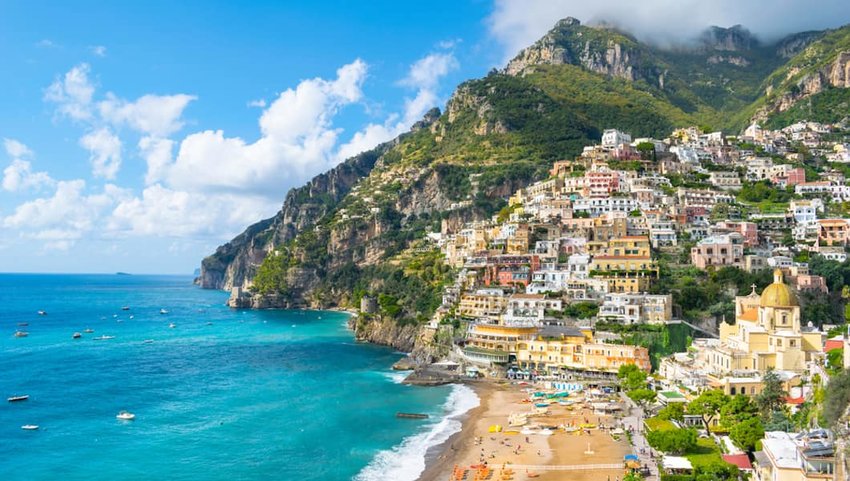There is no place as alluring and seductive as the Mediterranean. But even by over-the-top Mediterranean standards, the Amalfi Coast is a true gem. This enticing stretch of coastline on the tip of Italy’s Sorrentine Peninsula features picturesque fishing villages, hidden beaches and precipitous cliffs with narrow streets. This is where the mountains meet the turquoise sea, and whether you’re looking for complete relaxation or the ultimate adventure vacation, you will undoubtedly find it on the Almafi Coast.
The Almafi Coast has been designated a UNESCO World Heritage Site for its natural beauty and diversity, as well as its historical significance. From ancient cathedrals and villas to lush resorts and tempting restaurants, here’s what you need to know about exploring the unique towns and rugged landscapes of the dazzling Almafi Coast.
Best Time to Visit the Almafi Coast
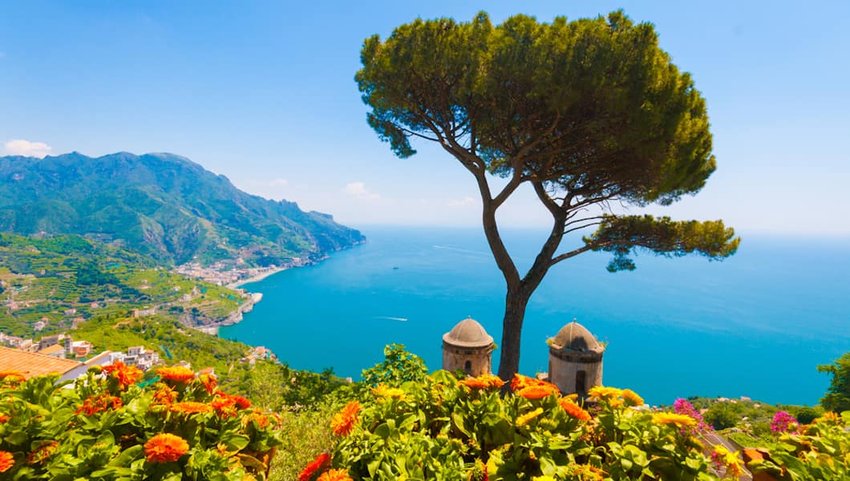
The Almafi Coast features a typical Mediterranean climate, with hot summers and cool, damp winters. Summers are the busiest time to visit, so be sure to book your reservations well in advance if you’re planning a trip between June and August. In May and September, you’ll find the perfect combination of beautiful weather and fewer crowds. As the season winds down toward the end of October, you’ll likely find some great travel deals, but be aware that many shops, restaurants and hotels close down during the winter season.
How to Get Around
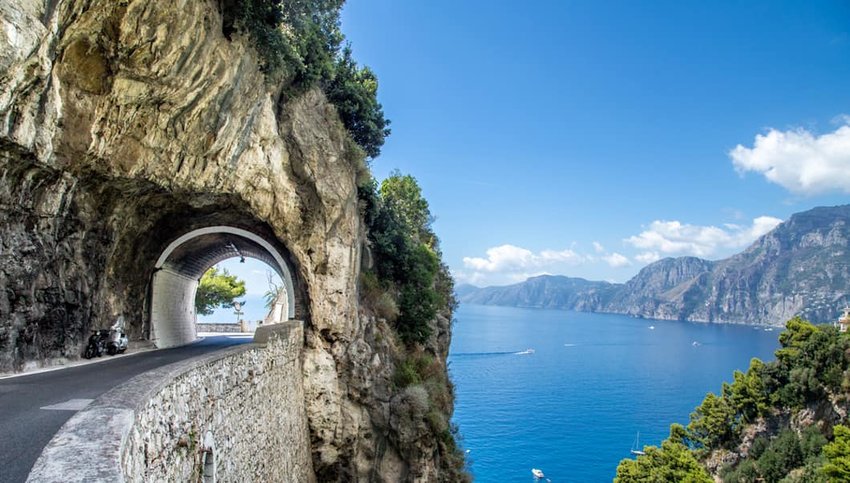
There are a few options for getting around on the Almafi Coast, and there are pros and cons to each. If you rent a car, you will have the flexibility of creating your own itinerary and traveling at your own pace, but the narrow streets, limited parking and congestion will try your patience. SITA buses travel between most towns on the Almafi Coast, and they are inexpensive and easy to use, but they do become crowded in the summer. Taking a ferry will allow you to experience the Almafi Coast from the water, for unsurpassed views of beaches, mountains and coastal towns, but the ferries only run during the main tourist season, from April to October.
The Island of Capri
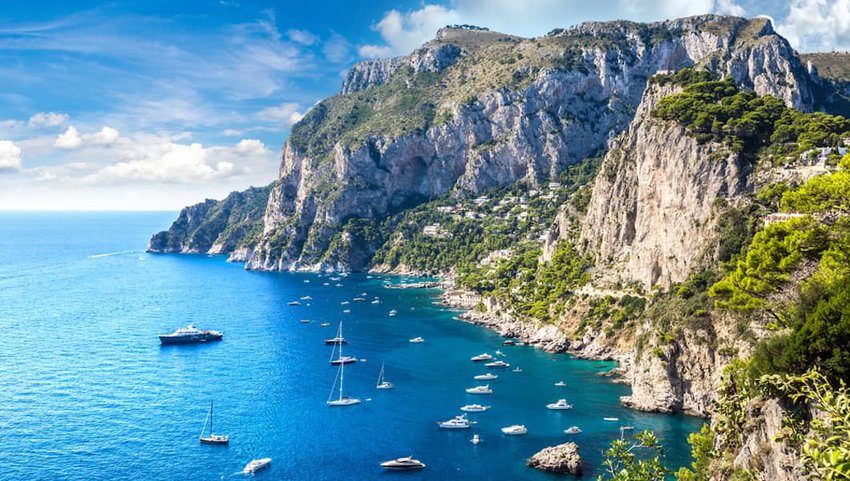
During your visit to the Almafi Coast, we urge you to dedicate at least one full day to touring Capri. If you visit during the months of July and August, plan for a few days so that you can create a more relaxing itinerary to beat the heat and the crowds.
This captivating island is world-famous for its natural beauty, boutique shopping and incredible nightlife. You can catch a ferry to Capri in Sorrento, or take a hydrofoil from Naples. Be sure to check out the famous Blue Grotto, which has been enchanting visitors since Roman times, with its mysterious caverns and electric blue water. A boat tour of the Blue Grotto will take about two hours, but be sure to arrive early in the morning to avoid the crowds. Next, take a tour of Capri’s most famous home, Villa San Michele. This villa-turned-museum is located 327 meters above sea level in Anacapri. Both the elaborate gardens and the panoramic views are mind-blowing.
Finally, be sure to spend some time in the Piazetta, where you’ll discover the heart of the island. Grab a cappuccino or cocktail at a cafe and relax outside in the square before dinner. And speaking of dinner, just a short walk from the Piazetta is La Capannina, where you will be treated to a legendary Caprese dining experience to rival any restaurant in town.
If you are planning on spending the night on the island, you’ll find a wide variety of lodging opportunities at every price point imaginable. For a taste of luxury with a fantastic view, consider Hotel Luna, which is lavishly landscaped and has an olympic sized pool.
Positano
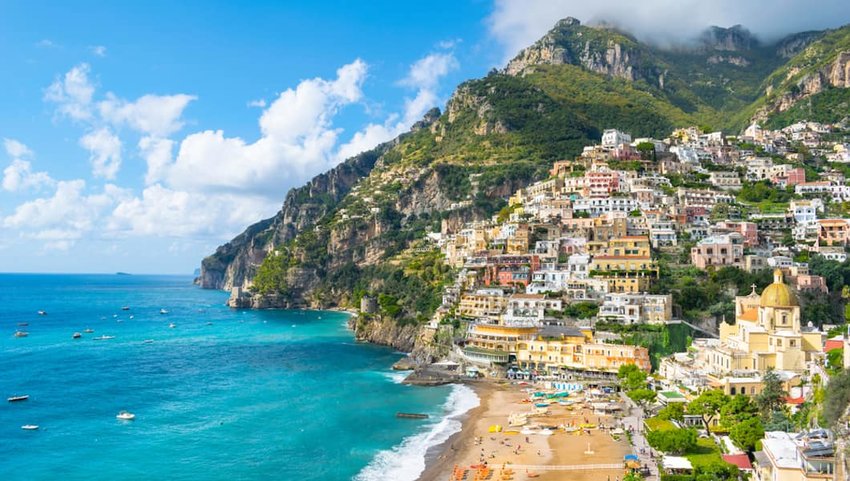
Romantic and enchanting, the hillside town of Positano is like stepping into a fairytale. The best way to explore this port is to simply meander the streets and relax near the water. Positano’s most famous attraction, the Church of Santa Maria Assunta, is well worth the visit. Located just a stone’s throw from Marina Grande Beach, the church has a fascinating history and features a colorful majolica tiled dome. For an authentic Italian dinner, take the shuttle up to La Tagliata. There is no set menu, but whatever they make is sure to wow you. And if you like beaches, you can claim a spot on one of its small, rocky shores to better soak up the sun.
Sorrento
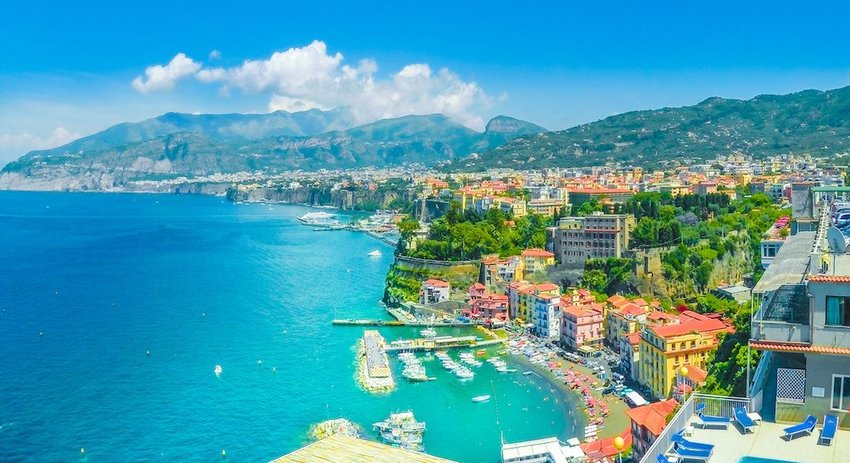
Sorrento is the gateway to the Amalfi Coast and is therefore busier with tourists than many of the smaller towns. On the plus side, this is a strategic home base for all of your Amalfi Coast day trips, as there’s lots of public transportation options, and there’s good competition for hotels and dining, which keeps the prices down. Some might argue that staying in Sorrento will dilute your Italian experience, as it caters largely to tourists, but it’s got plenty of charm and lots to do.
Must-see attractions in Sorrento include the Cathedral of Sorrento, with its beautiful clock tower and impressive frescoes, shopping along the Corso Italia and the back streets of town, and the bustling port of Marina Grande and the historic port of Marina Piccola. When you’re ready to relax, head to the Piazzo Tasso, which is the hub of town. You’ll find plenty to do here, but you can also simply relax at one of the many cafes and restaurants lining the square. For fine dining, we recommend Ristorante Museo Caruso.
Sorrento makes a fabulous home base for day trips in the region, so why not splurge on premium lodging with a view? The luxurious Grand Hotel Capodimonte provides breathtaking views of the Sorrento, the Gulf of Naples and Mt. Vesuvius. Five cascading waterfall pools nestled in the hillside are the perfect spot to relax after a busy day of sightseeing, and onsite restaurants provide everything from light snacks to five-course meals.
